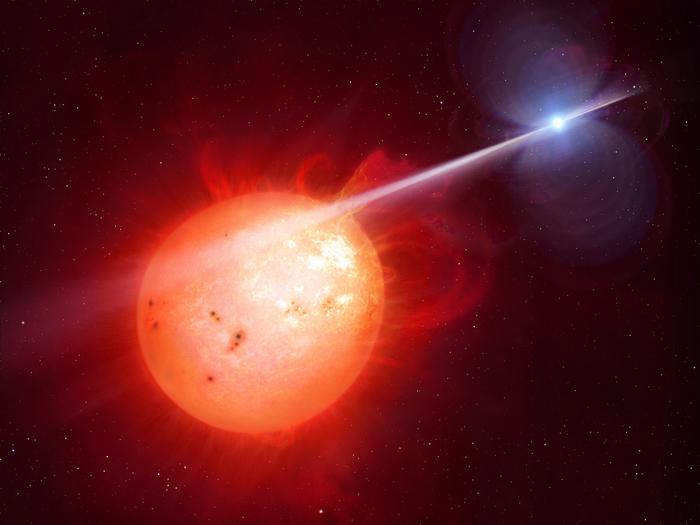
NASA's Chandra X-Ray Observatory helped diagnose the cause behind a large kink in a huge filament near the center of the Milky Way.

The energy of these gamma rays clocked in at 20 tera-electronvolts, or about ten trillion times the energy of visible light.

An unidentified source has been beaming out a pulse of radio waves every 22 minutes since 1988, astronomers say.

Astronomers have just found a second example of a white dwarf acting as a pulsar, following the first discovery in 2016.

Using the Green Bank Telescope (GBT), US astronomers have detected a new binary millisecond pulsar. The newly found pulsar, designated PSR J0212+5321, belongs to the "redback" subclass and is located relatively nearby.

The discovery of a neutron star emitting unusual radio signals is rewriting our understanding of these unique star systems.

ESA's XMM-Newton has found a pulsar - the spinning remains of a once-massive star - that is a thousand times brighter than previously thought possible.

Neutron stars are one possible suspect responsible for an abundance of positrons in the Milky Way. Now astronomers have caught one red handed.

Like a blinding beacon lighting up the night, a powerful gamma-ray-generating stellar husk has been seen pulsating in a neighboring galaxy.

The pulsar at the center of the famous Crab Nebula is a veritable bundle of energy. Astronomers observed the pulsar in the area of very high energy gamma radiation from 25 up to 400 gigaelectronvolts (GeV), a region that was previously difficult to access with high energy instruments, and discovered that it actually emits pulses with the maximum energy of up to 400 GeV -- 50 to 100 times higher than theorists thought possible. These latest observations are difficult for astrophysicists to explain.

This surprisingly powerful pulsar challenges existing theories about how these objects form.

A powerful new telescope is allowing an international team of scientists to have their